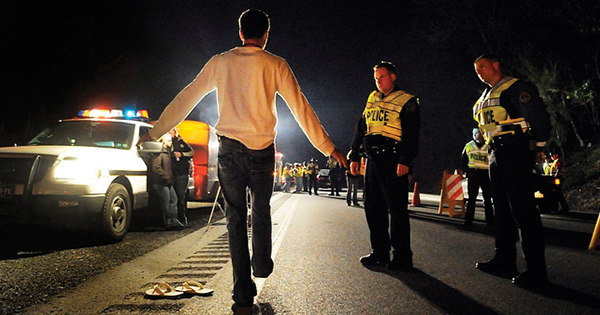Under the Influence
Prohibition may have failed, but the abolition of drunk driving seems within reach

Prohibition may have failed, but in this century the abolition of drunk driving seems within reach.
Within a decade, new tools that measure the concentration of alcohol in normally exhaled breath could be in every car. In a joint venture between 17 automakers and the National Highway Traffic Safety Administration, two new devices—one similar to a Breathalyzer, one a laser—are being developed by two Massachusetts-based companies. Both devices use infrared sensors in a car’s steering wheel, ignition button, or shift stick to instantly calculate a driver’s blood alcohol level—and, if need be, to disable the car.
Thanks to tougher laws, stricter enforcement, and more intense lobbying, the number of alcohol-related traffic fatalities in America decreased from more than 25,000 in 1980 to a new low of 10,000 in 2014, according to the National Highway Traffic Safety Administration.
Since 2005, many DUI offenders have been required to install Breathalyzers in their cars, at a cost of about $3 per day. When an impaired driver blows into an “ignition interlock” device, the car won’t start. All 50 states now have some kind of interlock law, and the sensor is mandatory for first-time DUI offenders in 23 states.
But a cultural shift is also under way as children who have grown up listening to Mothers Against Drunk Driving get their driver’s licenses. According to the most recent National Survey on Drug Use and Health, the prevalence of DUI has declined 59 percent among teenagers (aged 16 to 20) in the past 12 years: 16.2 percent of teens admitted to alcohol DUI in 2002, but only 6.6 percent did in 2014, according to the report, released in December. Self-reporting of DUI also declined 38 percent among young adults (aged 21 to 25), from 29.1 percent to 18.1 percent. Driving while high on marijuana also decreased for both groups.
The new infrared sensors could be integrated into vehicles in five to eight years, according to Bud Zaouk, program director of the Driver Alcohol Detection System for Safety. “The next step is to integrate the two prototypes into vehicles for a series of field tests,” he says.
Of course, if the self-driving car is perfected, everyone can drink and drive. But can technology save us from hangovers?

